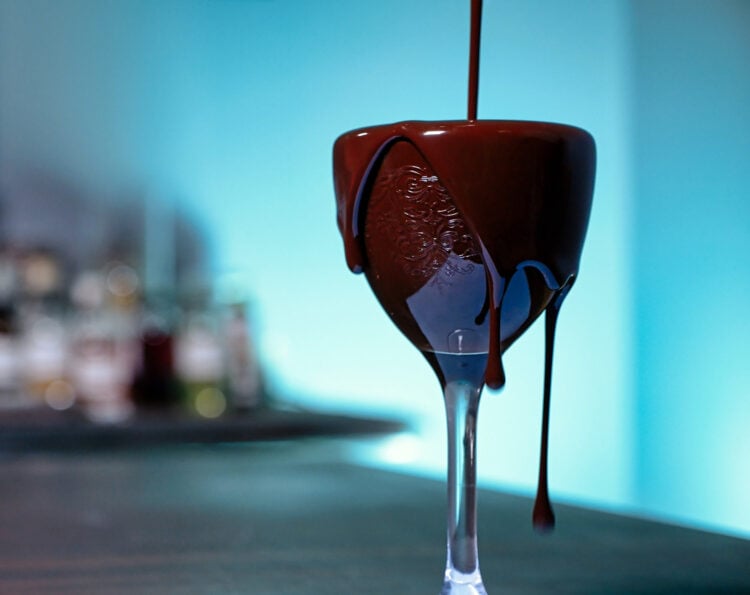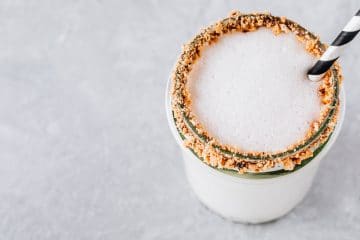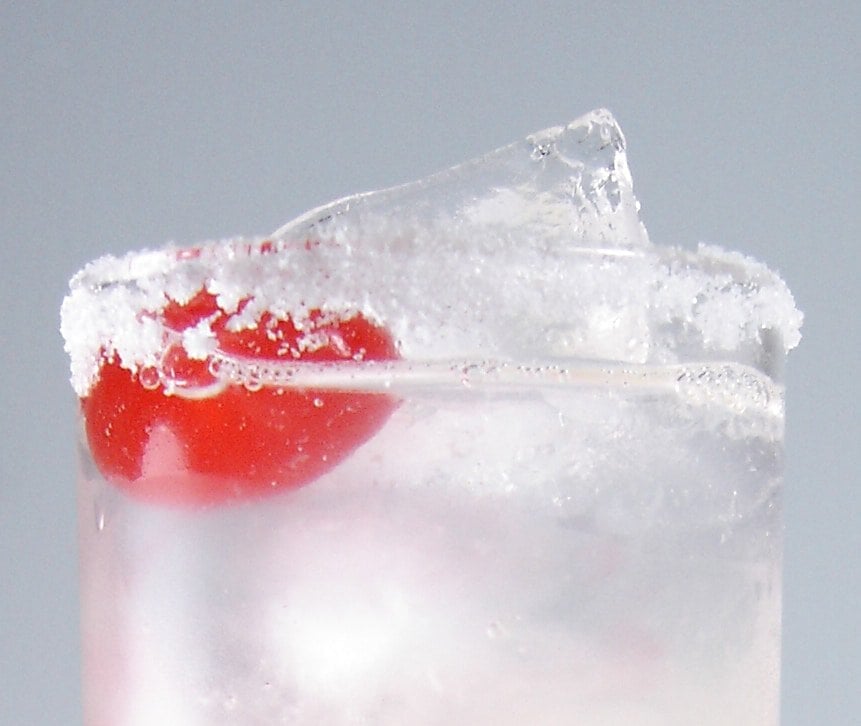Do you want to make the best chocolate syrup? Good, I have a simple, all-natural, one-ingredient trick that will improve the flavour and mixability of the syrup, and it was invented by the makers of Bosco Milk Amplifier back in 1928. The method is still used today by many chocolate syrup manufacturers.
And if you are into brewing or distilling, you’ll find some similarities in this recipe that will make perfect sense once you see it.
So, if you want to make better chocolate syrup for milkshakes, egg creams, cocktails, soda or just plain chocolate milk, stick around because I’m going to show you how to do it. I’m DSO, and this is AoD
A basic chocolate syrup contains three ingredients: water, sugar and cocoa powder. But, the invention of Bosco chocolate syrup in 1928 added a 4th ingredient that made things significantly better.
So what was the issue with simple three-ingredient chocolate syrup that required the fourth ingredient?
Well, Chocolate and specifically cocoa powder, contains a lot of starch, between 5 and 7%. And if you have ever made gravy or thickened a sauce with starch, you’ll know what a small amount of starch can do.
The thickening power of starch in cocoa powder made bottled chocolate syrups difficult to work with. They either seized up in the bottle, didn’t mix freely in drinks or had a powdery texture. Any kid who has tried to make chocolate milk with pure cocoa powder understands.
That includes me.
You could make chocolate syrup with less cocoa powder. But more cocoa powder makes a better drink if you want that deep, delicious chocolate flavour. But the more you use it, the thicker it gets.
Now we have a conundrum.
And sure, the syrup is fine when it is freshly made or hot, but leave, as seen on most YouTube videos, but leave it overnight, and you’ll have something resembling pudding. The most popular recipe on YouTube will turn out like this a day later. A little disappointing.
So What is the Solution?
The solution to the problem was solved by the Wallerstein company in 1928, which was mostly involved in the brewing industry, making hop concentrates, Burton salts and other brewing aids, but they also worked with enzymes.
They filed this patent in 1928 describing the use of enzymes to break down the starches in cocoa powder. And this recipe would become Bosco Chocolate Syrup.
Now, if you have ever brewed beer or toured a whisky distillery, you know that enzymes break down starchy material into simple sugars. They are naturally found in malted grains and humans–that’s how we digest things.
Cacao is a seed, much like corn, and both are packed with starch. But enzymes don’t work well when starch is in this crystal form found in seeds, so to break it down, you need to “gelatinize” it, which is just another way of saying you need to cook it.
Every bourbon or grit maker needs to do this with corn because it unravels the starch making it easier to digest. In the case of grits, cooking the corn makes it easier for us to digest, and for bourbon making, this gelatinization process makes it easier for the enzymes to break the starch down into simple sugars, which will eventually be used by yeast.
We need to do this with our cocoa powder as well. And most recipes for chocolate syrup heat the mixture anyway because it makes the cocoa powder seem more soluble in water, but it just swells the starch into the gelatinized form, which makes the syrup thick.
For the recipe, today will do the same cooking step but we will add one extra step where we add an enzyme to break down the starch into simple sugars, so it doesn’t thicken our syrup.
An additional benefit of this method is that it unlocks all of the flavour compounds that are bound up in the starch.
And this basic recipe requires just one common enzyme.
The Enzymes
The enzyme we will use is alpha-amylase. That’s the enzyme most commonly used in beer brewing and whisky making, but it is also ever present in your mouth as a component of saliva. You can’t really taste amylase because we always have it in our mouth, so our body just learned to ignore it, just like the flavour of the water.
An important thing to note is that the gelatinized/cooking temperature is that some enzymes break down at higher temperatures, so controlling heat is important.
Basic alpha-amylase has an optimum temperature between 66C (150F) to 71C (160F) and ideally in a pH range of 4.5 to 7.0.
The alpha-amylase will work at a lower temperature, but it is slow. At the prescribed temperature range, you only need 15 to 20 minutes to break down the starches.
You can also get high-temperature alpha-amylase, sometimes called “distillers enzymes,” and it is stable up to the boiling point. You can find it online for $3.00, and there is enough for at least 15 batches of syrup. The benefit being you don’t need to control the temperature as much.
Let me show you how to make it.
A Quick Word on Safety
This is a low-acid product, technically no acid, as the pH is about neutral to slightly above. That means food-borne illnesses can thrive in it, so it needs to be refrigerated.
Also, you need to have at least equal parts sugar and water to have a water activity that bacteria like botulism won’t thrive in. That means low-calorie chocolate syrups need a preservative. I’ll talk about this more in the future.
Lowering the pH could be helpful, but remember, to prevent botulism, the pH needs to be below 4.6 and milk curdles at around 4.8. Since most chocolate syrups find their way into milk products, you need to have some finesse when adjusting the pH or you’ll get milk chunks in your drink. I’ll deal with that in a different video, but for now, keep this syrup in the fridge.
Now on to making the chocolate syrup!
How to Make Soluble Chocolate Syrup
Makes 1.5 to 2.0L of Chocolate Syrup
Making this is really easy. You will need the following:
200 g Cocoa Powder
1100 g Sugar
800 mL Water
1/4 tsp (1g) alpha-Amylase Powder
This will make roughly 1.5 to 2 litres (quarts) of chocolate syrup. You can vary the ingredients, more or less cocoa powder (200 g/L gets good results, though).
Process
If you have a high temp amylase, add it now. If not follow these steps:
1. Mix cocoa powder and water into a smooth mixture free from lumps
2. Heat to 90 to 100C (190F to 212F) and simmer for 5 to 10 minutes
3. Allow to cool to 68C/155F, and add the amylase powder
4. Hold at this temperature for 20 to 30 minutes.
5. Add the sugar and heat if necessary to dissolve the sugar.
6. Cool and add flavourings like vanilla, cinnamon, etc if desired. (10 to 20 ml Vanilla extract per litre)
You can control the temperature on the stove, though I’ve found this difficult for small batches, but I’ve found using a thermos, like a mash tun for beer brewing works great. Or you can just take the pot off the heat and wrap it in a towel to keep the temperature stable. Once you are at the correct temperature mix in the enzymes and let it sit to do its thing.
Once it has cooled and has a syrup-like consistency, it is ready to bottle and use.
Flavour
You can flavour this syrup with some additional components like malt extract, vanilla, cinnamon, chilli pepper, salt, coffee, and caramel. Hershey’s, Bosco, Fox’s Ubet and even Ghirardelli premium chocolate syrup all have vanilla in them.
Clarification
Though enzymes do a great job of breaking down starches and fats, there will always be some material that remains. Once you have the syrup, I recommend a chill filtering step, just put the syrup in the fridge, let it get cold and then run it through a tea strainer. This will take out any cocoa clumps or blobs of cocoa butter.
Making clear chocolate syrup requires a centrifuge to clarify this syrup, giving it a bright shiny dark brown to black colour. In the future, I may try some clarification techniques like Irish Moss or bentonite to see if it works and how it affects the flavour. If you are interested in this, let me know below in the comments.
And historically, chocolate soda and chocolate phosphates were popular drinks, but they were always slightly hazy like Yoo-hoo, and I’m convinced this is why chocolate soda isn’t common these days.
Price
If you make your own syrup the price will mostly depend on the type and cost of the cocoa powder you use as water is free, enzymes are pennies per litre and sugar is relatively inexpensive. Typically the price
The price per oz of syrup is $0.05 to $0.12 per serving.
Environmental Benefits
One benefit of making your chocolate syrup is that it has environmental benefits. The key benefit is that you are not shipping water around because the water makes the syrup heavy and bulky, requiring more transportation (trucks, trains, etc.) to move it around. One way to save the planet is to stop moving water around since we all have access to it.





